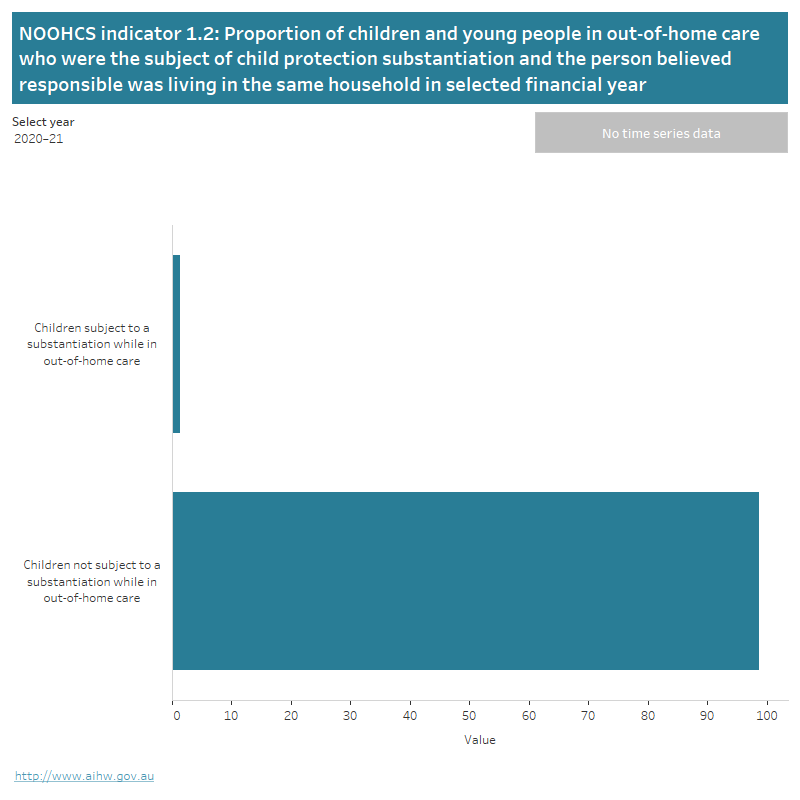1.2 Safety
Care should be taken when interpreting the time series for this indicator, as it has been affected by the implementation of the national definition of out-of-home care.
As of 2019, all states and territories have adopted a nationally consistent definition of out-of-home care which excludes children on third-party parental responsibility orders, children on immigration orders, young people aged 18 and over, and children in pre-adoptive placements from counts of children in out-of-home care.
Out-of-home care data from the 2018–19 reporting period onwards are based on this nationally agreed definition and, where possible, back cast to 2016–17. These should not be compared with data for previous years or previously published out-of-home care data.
For more information on the national definition of out-of-home care, see Child protection Australia 2018–19.
Out-of-home care is provided across Australia for children who are unable to live with their families, generally because of child abuse or neglect, or because their family is unable to care for them (for example, due to illness or incarceration). It is important that children are provided with a safe home environment during their time in care.
This indicator captures children in out-of-home care who were the subject of a substantiation (and the person believed responsible was living in the household), as a proportion of all children in out-of-home care.
Trend data: For all indicator displays, the yearly trend is limited to indicators with 3 or more years (including the current year) of comparable time series data. To see the trend click on “Yearly Trend” button on the display. Where 3 or more years of comparable data including the most recent year is not available, a “No time series data” message is shown on the display.
The horizontal bar graph shows the proportion of children and young people aged 0–17 in out-of-home care who were the subject of child protection substantiation and the person believed responsible was living in the same household. The graph also presents the proportion of children not subject to a substantiation while in out-of-home care. Data can be selected by year from 2009–10 to 2020–21.

Source: Steering Committee for the Review of Government Service Provision (2022) Report on government services 2022, Productivity Commission, Australian Government.
See the supplementary data tables for further information and footnotes about these data.
Indicator technical specifications
The information below provides technical specifications for the summary indicator data presented in the quick reference guide.
| Definition | Data source | |
|---|---|---|
|
Numerator |
Number of children aged 0-17 years in out-of-home care during the reference period, who were the subject of a child protection substantiation whilst in out-of-home care during the reference period (regardless of the date of notification), and the person believed responsible was living in the household providing out-of-home care (or a worker in a residential facility in which the child was living) at the time the harm occurred |
AIHW National Child Protection Data Collection (2009-10 to 2011-12), Report on Government Services (2012-13 onwards) |
|
Denominator |
Number of children aged 0-17 years in out-of-home care during the reference period |
AIHW National Child Protection Data Collection (2009-10 to 2011-12), Report on Government Services (2012-13 onwards) |
Explanatory notes
Differences in child protection legislation, policies and practices across jurisdictions and over time can affect the number and rate of children in out-of-home care and substantiations, so caution must be used when interpreting the data.
The administrative data reported to the AIHW on child protection substantiations reflects departmental activity. Administrative data captures incidence of substantiations of harm, or risk of harm, rather than prevalence of abuse and neglect.


